Today, tutorial researchers profit from the modifications pushed by digital applied sciences and the large progress of information and knowledge, on globalisation, enlargement of the scientific neighborhood, and the linkage between totally different scientific communities and the society. To totally profit from this improvement, nevertheless, data wants to be shared overtly and transparently. Digitalisation performs a significant position right here as a result of it permeates all areas of enterprise, science and society and is among the key drivers for innovation and worldwide cooperation.
To handle the ensuing alternatives, the EU promotes the event and use of collaborative methods to produce and share information and knowledge as early as attainable in the research course of, but additionally to appropriately safe outcomes with the European technique for Open Science (OS). It is now broadly recognised that making research outcomes extra accessible to all societal actors contributes to simpler and environment friendly science; it additionally serves as a lift for innovation in the general public and personal sectors. However for research knowledge to be findable, accessible, interoperable and reusable using requirements is crucial. At the metadata stage, appreciable efforts in standardisation have already been made (e.g. Data Management Plan and FAIR Principle and so forth.)
whereas in context with the uncooked knowledge these elementary efforts are nonetheless fragmented and in some circumstances utterly lacking. The CHARME consortium, funded by the European Cooperation in Science and Technology (COST) Agency, has recognized wants and gaps in the sphere of standardisation in the life sciences and additionally mentioned potential hurdles for implementation of requirements in present observe. Here, the authors recommend 4 measures in response to present challenges to guarantee a top quality of life science research knowledge and their re-usability for research and innovation.
Category principle and foundations of life science: A structuralist perspective on cognition
Category principle has lately been utilized efficiently past arithmetic and its foundations, for instance, in quantum physics, quantum computing, linguistics, and pure language processing in synthetic intelligence. Category principle right this moment is arguably foundations of science in addition to foundations of arithmetic. Yet functions of class principle to the life sciences are nonetheless restricted, and there are seemingly no clearly profitable paradigmatic circumstances of them. Here we handle foundational elements of class principle in and throughout the sciences, and potential structural interconnections between class principle and the life sciences, in explicit cognitive science.
More particularly, we first handle the 2 elements of class principle as foundations of science and as foundations of arithmetic in explicit, and then talk about what class principle may do for foundations of life science, in explicit cognitive science. We suggest, amongst different issues, a categorical structuralist approach to the thoughts-physique drawback as an various to reductionist approaches, which is arguably of each scientific and metaphysical significance on the identical time.
Category principle permits us to elucidate structural interconnections between the legal guidelines of cognition and the legal guidelines of actuality, thus paving the way in which for overcoming the Cartesian dualism separating the cognitive and bodily worlds. Put one other approach, class principle means that there could also be larger legal guidelines governing each worlds directly; the upper structuralist principle of cognition might embody the double side principle of data by David Chalmers.
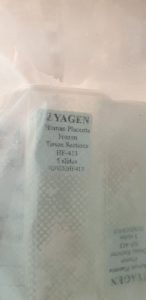
Journal publication ethics and implications for life science researchers: a COPE perspective
The high quality of the research report in the type of peer-reviewed journal archives is a mirrored image of not solely the standard of the research publication and correction course of, but additionally the standard of the underlying information creation course of. Key to the integrity of the research report are honesty and accountability from all events concerned in governing, performing, and publishing scholarly work. A concerted effort is required to nurture an moral research publishing tradition by selling moral observe, related coaching, and efficient methods for responding to allegations of research or publication misconduct.
The Committee on Publication Ethics (COPE) is a membership organisation that goals to promote integrity in research publishing, for instance, by growing and encouraging greatest practices to be certain that research is reported ethically, utterly, and transparently. COPE makes use of the Principles of Transparency and Best Practice in Scholarly Publishing as a part of its standards when evaluating publishers and journals as members. Researchers may make use of those tips to assess a journal’s high quality and to acquire insights into what peer-reviewed journals anticipate from authors.
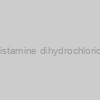 Histamine dihydrochloride |
|
T6534-10mg |
TargetMol Chemicals |
10mg |
Ask for price |
|
|
|
Description: Histamine dihydrochloride |
 Histamine dihydrochloride |
|
T6534-1g |
TargetMol Chemicals |
1g |
Ask for price |
|
|
|
Description: Histamine dihydrochloride |
 Histamine dihydrochloride |
|
T6534-1mg |
TargetMol Chemicals |
1mg |
Ask for price |
|
|
|
Description: Histamine dihydrochloride |
 Histamine dihydrochloride |
|
T6534-50mg |
TargetMol Chemicals |
50mg |
Ask for price |
|
|
|
Description: Histamine dihydrochloride |
 Histamine dihydrochloride |
|
T6534-5mg |
TargetMol Chemicals |
5mg |
Ask for price |
|
|
|
Description: Histamine dihydrochloride |
 Histamine dihydrochloride |
|
RM1237-25G |
EWC Diagnostics |
1 unit |
EUR 106.87 |
|
Description: Histamine dihydrochloride |
 Histamine dihydrochloride |
|
RM1237-5G |
EWC Diagnostics |
1 unit |
EUR 30.21 |
|
Description: Histamine dihydrochloride |
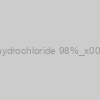 Histamine dihydrochloride 98%_x000D__x000D_ |
|
H06870 |
Pfaltz & Bauer |
25G |
EUR 662.55 |
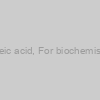 Oleic acid, For biochemistry |
|
RM5371-5ML |
EWC Diagnostics |
1 unit |
EUR 50.98 |
|
Description: Oleic acid, For biochemistry |
) Amino acid-kit ?(for biochemistry) |
|
K007-1KT |
EWC Diagnostics |
1 unit |
EUR 67.59 |
|
Description: Amino acid-kit ?(for biochemistry) |
) Amino acid-kit ?(for biochemistry) |
|
K007-5KT |
EWC Diagnostics |
1 unit |
EUR 303.95 |
|
Description: Amino acid-kit ?(for biochemistry) |
 SMARCA-BD ligand 1 for Protac dihydrochloride |
|
T13890-10mg |
TargetMol Chemicals |
10mg |
Ask for price |
|
|
|
Description: SMARCA-BD ligand 1 for Protac dihydrochloride |
 SMARCA-BD ligand 1 for Protac dihydrochloride |
|
T13890-1g |
TargetMol Chemicals |
1g |
Ask for price |
|
|
|
Description: SMARCA-BD ligand 1 for Protac dihydrochloride |
 SMARCA-BD ligand 1 for Protac dihydrochloride |
|
T13890-1mg |
TargetMol Chemicals |
1mg |
Ask for price |
|
|
|
Description: SMARCA-BD ligand 1 for Protac dihydrochloride |
 SMARCA-BD ligand 1 for Protac dihydrochloride |
|
T13890-50mg |
TargetMol Chemicals |
50mg |
Ask for price |
|
|
|
Description: SMARCA-BD ligand 1 for Protac dihydrochloride |
 SMARCA-BD ligand 1 for Protac dihydrochloride |
|
T13890-5mg |
TargetMol Chemicals |
5mg |
Ask for price |
|
|
|
Description: SMARCA-BD ligand 1 for Protac dihydrochloride |
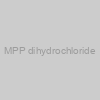 MPP dihydrochloride |
|
B6910-10 |
ApexBio |
10 mg |
EUR 223 |
|
|
|
Description: ERα receptors silent antagonist |
 MPP dihydrochloride |
|
B6910-50 |
ApexBio |
50 mg |
EUR 946 |
|
|
|
Description: ERα receptors silent antagonist |
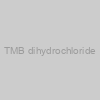 TMB dihydrochloride |
|
C7061-1000 |
ApexBio |
1g |
EUR 44 |
|
|
 TMB dihydrochloride |
|
C7061-500 |
ApexBio |
500mg |
EUR 32 |
|
|
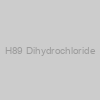 H89 Dihydrochloride |
|
20-abx076747 |
Abbexa |
-
Ask for price
-
Ask for price
|
|
|
|
 TMB dihydrochloride |
|
T19069-10mg |
TargetMol Chemicals |
10mg |
Ask for price |
|
|
|
Description: TMB dihydrochloride |
 TMB dihydrochloride |
|
T19069-1g |
TargetMol Chemicals |
1g |
Ask for price |
|
|
|
Description: TMB dihydrochloride |
 TMB dihydrochloride |
|
T19069-1mg |
TargetMol Chemicals |
1mg |
Ask for price |
|
|
|
Description: TMB dihydrochloride |
 TMB dihydrochloride |
|
T19069-50mg |
TargetMol Chemicals |
50mg |
Ask for price |
|
|
|
Description: TMB dihydrochloride |
 TMB dihydrochloride |
|
T19069-5mg |
TargetMol Chemicals |
5mg |
Ask for price |
|
|
|
Description: TMB dihydrochloride |
 TMB dihydrochloride |
|
TB0514 |
Bio Basic |
1g |
EUR 85.06 |
|
|
 SAG dihydrochloride |
|
T40465-10mg |
TargetMol Chemicals |
10mg |
Ask for price |
|
Description: SAG dihydrochloride |
 SAG dihydrochloride |
|
T40465-1g |
TargetMol Chemicals |
1g |
Ask for price |
|
Description: SAG dihydrochloride |
 SAG dihydrochloride |
|
T40465-1mg |
TargetMol Chemicals |
1mg |
Ask for price |
|
Description: SAG dihydrochloride |
 SAG dihydrochloride |
|
T40465-50mg |
TargetMol Chemicals |
50mg |
Ask for price |
|
Description: SAG dihydrochloride |
 SAG dihydrochloride |
|
T40465-5mg |
TargetMol Chemicals |
5mg |
Ask for price |
|
Description: SAG dihydrochloride |
 H89 Dihydrochloride |
|
SIH-452-25MG |
Stressmarq |
25 mg |
EUR 382 |
|
Description: PKA inhibitor |
 H89 Dihydrochloride |
|
SIH-452-5MG |
Stressmarq |
5 mg |
EUR 96 |
|
Description: PKA inhibitor |
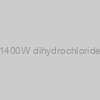 1400W dihydrochloride |
|
2055-25 |
Biovision |
each |
EUR 405.6 |
 1400W dihydrochloride |
|
2055-5 |
Biovision |
each |
EUR 151.2 |
 IT1t dihydrochloride |
|
B5650-10 |
ApexBio |
10 mg |
EUR 198 |
|
|
|
Description: CXCR4 antagonist, potent |
 IT1t dihydrochloride |
|
B5650-100 |
ApexBio |
100 mg |
EUR 1244 |
|
|
|
Description: CXCR4 antagonist, potent |
 IT1t dihydrochloride |
|
B5650-25 |
ApexBio |
25 mg |
EUR 398 |
|
|
|
Description: CXCR4 antagonist, potent |
 IT1t dihydrochloride |
|
B5650-5 |
ApexBio |
5 mg |
EUR 113 |
|
|
|
Description: CXCR4 antagonist, potent |
 IT1t dihydrochloride |
|
B5650-5.1 |
ApexBio |
10 mM (in 1mL DMSO) |
EUR 261.6 |
|
Description: IT1t dihydrochloride is a potent antagonist of CXCR4 with IC50 value of 8.0 nM [1]. C-X-C chemokine receptor type 4 (CXCR4) is an ?-chemokine receptor for chemokine CXCL12. |
 IT1t dihydrochloride |
|
B5650-50 |
ApexBio |
50 mg |
EUR 715 |
|
|
|
Description: CXCR4 antagonist, potent |
 DMPQ dihydrochloride |
|
B6642-10 |
ApexBio |
10 mg |
EUR 187 |
|
|
|
Description: PDGFRβ inhibitor |
 DMPQ dihydrochloride |
|
B6642-5 |
ApexBio |
5 mg |
EUR 184.8 |
 DMPQ dihydrochloride |
|
B6642-50 |
ApexBio |
50mg |
EUR 792 |
|
|
|
Description: PDGFRβ inhibitor |
 GNTI dihydrochloride |
|
B6669-10 |
ApexBio |
10 mg |
EUR 330 |
|
|
|
Description: κ opioid receptor antagonist |
 GNTI dihydrochloride |
|
B6669-50 |
ApexBio |
50 mg |
EUR 1394 |
|
|
|
Description: κ opioid receptor antagonist |
 1400W dihydrochloride |
|
B6730-10 |
ApexBio |
10 mg |
EUR 60 |
|
|
|
Description: INOS inhibitor,potent and highly selective |
 1400W dihydrochloride |
|
B6730-100 |
ApexBio |
100 mg |
EUR 384 |
|
|
|
Description: INOS inhibitor,potent and highly selective |
 1400W dihydrochloride |
|
B6730-50 |
ApexBio |
50 mg |
EUR 240 |
|
|
|
Description: INOS inhibitor,potent and highly selective |
 DMPQ Dihydrochloride |
|
20-abx076714 |
Abbexa |
-
Ask for price
-
Ask for price
|
|
|
|
 DMPQ dihydrochloride |
|
T22740-10mg |
TargetMol Chemicals |
10mg |
Ask for price |
|
|
|
Description: DMPQ dihydrochloride |
 DMPQ dihydrochloride |
|
T22740-1g |
TargetMol Chemicals |
1g |
Ask for price |
|
|
|
Description: DMPQ dihydrochloride |
 DMPQ dihydrochloride |
|
T22740-1mg |
TargetMol Chemicals |
1mg |
Ask for price |
|
|
|
Description: DMPQ dihydrochloride |
 DMPQ dihydrochloride |
|
T22740-50mg |
TargetMol Chemicals |
50mg |
Ask for price |
|
|
|
Description: DMPQ dihydrochloride |
 DMPQ dihydrochloride |
|
T22740-5mg |
TargetMol Chemicals |
5mg |
Ask for price |
|
|
|
Description: DMPQ dihydrochloride |
 PB28 dihydrochloride |
|
T23122-10mg |
TargetMol Chemicals |
10mg |
Ask for price |
|
|
|
Description: PB28 dihydrochloride |
 PB28 dihydrochloride |
|
T23122-1g |
TargetMol Chemicals |
1g |
Ask for price |
|
|
|
Description: PB28 dihydrochloride |
 PB28 dihydrochloride |
|
T23122-1mg |
TargetMol Chemicals |
1mg |
Ask for price |
|
|
|
Description: PB28 dihydrochloride |
 PB28 dihydrochloride |
|
T23122-50mg |
TargetMol Chemicals |
50mg |
Ask for price |
|
|
|
Description: PB28 dihydrochloride |
 PB28 dihydrochloride |
|
T23122-5mg |
TargetMol Chemicals |
5mg |
Ask for price |
|
|
|
Description: PB28 dihydrochloride |
 GNTI dihydrochloride |
|
T22802-10mg |
TargetMol Chemicals |
10mg |
Ask for price |
|
|
|
Description: GNTI dihydrochloride |
 GNTI dihydrochloride |
|
T22802-1g |
TargetMol Chemicals |
1g |
Ask for price |
|
|
|
Description: GNTI dihydrochloride |
 GNTI dihydrochloride |
|
T22802-1mg |
TargetMol Chemicals |
1mg |
Ask for price |
|
|
|
Description: GNTI dihydrochloride |
 GNTI dihydrochloride |
|
T22802-50mg |
TargetMol Chemicals |
50mg |
Ask for price |
|
|
|
Description: GNTI dihydrochloride |
 GNTI dihydrochloride |
|
T22802-5mg |
TargetMol Chemicals |
5mg |
Ask for price |
|
|
|
Description: GNTI dihydrochloride |
 DAPI Dihydrochloride |
|
T19827-10mg |
TargetMol Chemicals |
10mg |
Ask for price |
|
|
|
Description: DAPI Dihydrochloride |
 DAPI Dihydrochloride |
|
T19827-1g |
TargetMol Chemicals |
1g |
Ask for price |
|
|
|
Description: DAPI Dihydrochloride |
 DAPI Dihydrochloride |
|
T19827-1mg |
TargetMol Chemicals |
1mg |
Ask for price |
|
|
|
Description: DAPI Dihydrochloride |
 DAPI Dihydrochloride |
|
T19827-50mg |
TargetMol Chemicals |
50mg |
Ask for price |
|
|
|
Description: DAPI Dihydrochloride |
 DAPI Dihydrochloride |
|
T19827-5mg |
TargetMol Chemicals |
5mg |
Ask for price |
|
|
|
Description: DAPI Dihydrochloride |
 C012 Dihydrochloride |
|
T30676-10mg |
TargetMol Chemicals |
10mg |
Ask for price |
|
|
|
Description: C012 Dihydrochloride |
 C012 Dihydrochloride |
|
T30676-1g |
TargetMol Chemicals |
1g |
Ask for price |
|
|
|
Description: C012 Dihydrochloride |
 C012 Dihydrochloride |
|
T30676-1mg |
TargetMol Chemicals |
1mg |
Ask for price |
|
|
|
Description: C012 Dihydrochloride |
 C012 Dihydrochloride |
|
T30676-50mg |
TargetMol Chemicals |
50mg |
Ask for price |
|
|
|
Description: C012 Dihydrochloride |
 C012 Dihydrochloride |
|
T30676-5mg |
TargetMol Chemicals |
5mg |
Ask for price |
|
|
|
Description: C012 Dihydrochloride |
 TD52 dihydrochloride |
|
T35528L-10mg |
TargetMol Chemicals |
10mg |
Ask for price |
|
|
|
Description: TD52 dihydrochloride |
 TD52 dihydrochloride |
|
T35528L-1g |
TargetMol Chemicals |
1g |
Ask for price |
|
|
|
Description: TD52 dihydrochloride |
 TD52 dihydrochloride |
|
T35528L-1mg |
TargetMol Chemicals |
1mg |
Ask for price |
|
|
|
Description: TD52 dihydrochloride |
 TD52 dihydrochloride |
|
T35528L-50mg |
TargetMol Chemicals |
50mg |
Ask for price |
|
|
|
Description: TD52 dihydrochloride |
 TD52 dihydrochloride |
|
T35528L-5mg |
TargetMol Chemicals |
5mg |
Ask for price |
|
|
|
Description: TD52 dihydrochloride |
 1400W dihydrochloride |
|
T3491-10mg |
TargetMol Chemicals |
10mg |
Ask for price |
|
|
|
Description: 1400W dihydrochloride |
 1400W dihydrochloride |
|
T3491-1g |
TargetMol Chemicals |
1g |
Ask for price |
|
|
|
Description: 1400W dihydrochloride |
 1400W dihydrochloride |
|
T3491-1mg |
TargetMol Chemicals |
1mg |
Ask for price |
|
|
|
Description: 1400W dihydrochloride |
 1400W dihydrochloride |
|
T3491-50mg |
TargetMol Chemicals |
50mg |
Ask for price |
|
|
|
Description: 1400W dihydrochloride |
 1400W dihydrochloride |
|
T3491-5mg |
TargetMol Chemicals |
5mg |
Ask for price |
|
|
|
Description: 1400W dihydrochloride |
 TMPD dihydrochloride |
|
T40732-10mg |
TargetMol Chemicals |
10mg |
Ask for price |
|
|
|
Description: TMPD dihydrochloride |
 TMPD dihydrochloride |
|
T40732-1g |
TargetMol Chemicals |
1g |
Ask for price |
|
|
|
Description: TMPD dihydrochloride |
 TMPD dihydrochloride |
|
T40732-1mg |
TargetMol Chemicals |
1mg |
Ask for price |
|
|
|
Description: TMPD dihydrochloride |
 TMPD dihydrochloride |
|
T40732-50mg |
TargetMol Chemicals |
50mg |
Ask for price |
|
|
|
Description: TMPD dihydrochloride |
 TMPD dihydrochloride |
|
T40732-5mg |
TargetMol Chemicals |
5mg |
Ask for price |
|
|
|
Description: TMPD dihydrochloride |
 DMPQ Dihydrochloride |
|
SIH-441-25MG |
Stressmarq |
25 mg |
EUR 309 |
|
Description: PDGFRβ kinase inhibitor |
 DMPQ Dihydrochloride |
|
SIH-441-5MG |
Stressmarq |
5 mg |
EUR 78 |
|
Description: PDGFRβ kinase inhibitor |
 IT1t dihydrochloride |
|
T11693L-10mg |
TargetMol Chemicals |
10mg |
Ask for price |
|
|
|
Description: IT1t dihydrochloride |
 IT1t dihydrochloride |
|
T11693L-1g |
TargetMol Chemicals |
1g |
Ask for price |
|
|
|
Description: IT1t dihydrochloride |
The current article outlines and discusses these tips to assist life science researchers publish ethically, in addition to to determine moral journals as readers, authors, and reviewers. We define latest developments in scholarly publishing that we expect will enhance the working surroundings and profession prospects for life scientists. Most prominently, we talk about two key developments. (1) Life scientists at the moment are embracing a preprint tradition main to fast dissemination of research findings. (2) We define steps to overcome the reproducibility disaster. We additionally briefly describe different improvements in scholarly publishing, together with modifications to open entry mandates from funding companies.





